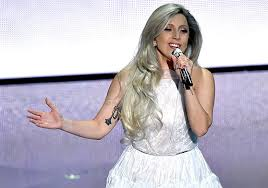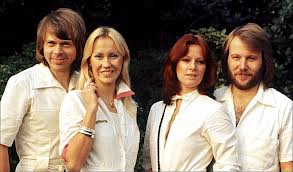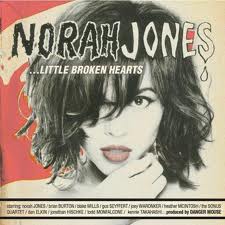Marketing Lady Gaga as a musical brand
Lady Gaga at the Oscars 2015
LET’S start at the very beginning, a very good place to start. Among other things at the Oscar Awards 2015, Lady Gaga’s rendition of’ The Sound of Music’ medley made headlines worldwide. Both the social media and conventional publications were abuzz with comments and articles on how the pop sensation could actually sing too. For many, it came as the biggest surprise on earth.
Lady Gaga is undoubtedly a very talented artiste, having started at the age of four and been a teenage sensation in theatrical musicals. However, she has largely been known for her antics than for her music. The world discussed her more for her outlandish ‘meat dress’, her egg-shaped costumes and ultra-weird hairdos. She’s also been the product of some extremely creative new age marketing strategies aimed at various categories which lapped things up instantly.
Her performance at the Oscars was not only an eye-opener, but also the smartest thing she’s probably done. Within a 10-minute span, she and the event organisers did nothing but sell pure nostalgia to the ideal target audience, comprising millions of television viewers across the globe, a large chunk of which had never taken Lady Gaga seriously before, and who after her show associated her instantly with emotions they had related to while they were growing up.
If one looks closely, it’s not that Lady Gaga is the only singer in the world who could have given this performance. Yes, she hit the right notes and created a stir, but that’s something that any talented singer would do, including Mumbai’s very own Vivienne Pocha, Samantha Edwards, Dominique Cerejo and Caralisa Monteiro. Most singers begin their lessons with ‘The Sound of Music’, and songs from the movie are ingrained not only among singers but among music lovers too.
An entire generation has grown up on and has mastered these songs, but when Lady Gaga performed them, everyone raved about her singing talents and how hard she worked on voice training. And the trick there clearly lay in how the whole episode was packaged. It wasn’t just an ordinary medley, but the epitome of marketing savvy.
First, extracts of songs from the original movie were shown, getting the audience into a nostalgic mood. This was followed by Lady Gaga’s performance, comprising songs not featured in the visual clip. Her trained voice, flowing gown, tattooed arms, uncharacteristically simple hairstyle and minimal physical movement, as well as the live violins, went perfectly with the ambience, and one didn’t really care if the classic ‘Edelweiss’ didn’t really fit in or match the original. Across the world, the ‘halls’ were alive to the sound of music.
The performance touched a chord, and the singer got a standing ovation. Even as people were clapping, in walked Julie Andrews, the star of the original film, and after a brief interaction, Lady Gaga just vanished. The applause continued, and what would have been an ordinary rendition turned out to be a memorable moment in recent Oscar history.
Within minutes, videos of Gaga’s act went viral on YouTube, and in the hours that followed, the world posted and shared more about her enormous singing talent than about best actor Eddie Redmayne or best film ‘Birdman’. Articles on her ‘surprise performance’ were posted everywhere, while some sections wondered what the hype was all about. This was showbiz at its very best. To pun on a Queen song, don’t be surprised if for a few days, all you hear is Lady-O Gaga.
—
EVER since she arrived on the scene in 2008 with her album ‘The Fame’, Lady Gaga has been one of the music industry’s most successful marketing stories. While much credit to her success would go to her former manager Troy Carter, with whom she split a couple of years ago, the singer has herself contributed with ideas that have revolutionised the way celebrity brands can be sold.
Initially, her focus was on the teenage and young segment – and she used Facebook, Twitter and YouTube remarkably to build her fan base and popularise songs like ‘Just dance’, ‘Poker face’ and ‘Bad romance’. But that was something many people were doing.
Before one could blink, she aimed at the other extreme of the audience, collaborating with veteran singer Tony Bennett, 60 years her senior, first on the song ‘The Lady is a Tramp’, and then on the album ‘Cheek to Cheek’, which has immortal classics like ‘Lush life’, ‘It don’t mean a thing’, ‘Sophisticated lady’ and ‘Nature boy’. The recoding won a Grammy for Best Traditional Pop Vocal Performance, and her new manager Bobby Campbell became a celebrity too.
By doing this album, she targeted a much older generation, making many grandparents relive their younger days and also relating to their grandchildren’s fascination for Lady Gaga. More than any other pop singer, she charmed two extreme generations, using nothing but simple common sense, and bridged the gap in her own way.
The Lady Gaga success story till her third album ‘Born This Way’, released in 2013, has been covered in Anita Elberse’s thoroughly researched book ‘Blockbusters: Why Big Hits – and Big Bucks – are the Future of the Entertainment Business’. In fact, she is the only case which has been studied twice in the book, which also talks of brands like entertainment houses Warner Brothers, MGM and Marvel Entertainment, superstar Tom Cruise, record label Octone Records, musical acts Radiohead and Jay-Z, online video channels YouTube and Hulu, football club Real Madrid and tennis superstar Maria Sharapova, besides other names in book publishing, television and basketball.
The first case study on ‘Launching and Managing Blockbusters’, talks about Lady Gaga’s rise to fame, her initial album launches, how she targeted the young generation through the social media, her obsession for image-building through shock value and the way she used the live concert medium to build up her fan base.
The book says: “Gaga heavily relied on Facebook, Twitter and YouTube to spread further word of mouth and strengthen her connection with her fans – or her “little monsters”, as she liked to call them. She turned out to be extraordinarily skilled at doing so: by 2011, Gaga was the most popular living person on Facebook and the most followed person on Twitter.
The second case study is used in a chapter on the ‘Future of Blockbuster Strategies’. Special mention is made on how, while releasing her album ‘Born This Way’, she partnered with brands like Beats high-end headphones, Amazon, Belvedere vodka, Best Buy, Guilte Group, Starbucks and Zygna. With most musicians relying on conventional marketing means by tying up with record labels, Gaga collaborated with an unusual mix of brands, to reach out to a wider set of audiences.
The Beats headphone tie-up helped her connect with sound-conscious audiences. While Amazon offered her album ‘Born this Way’ for 99 cents to promote its new cloud-based service, Belvedere promoted its vodka by holding a contest offering tickets to her concert in London. Best Buy bundled the album with the purchase of a phone, and Gulite Group created special Gaga-inspired merchandise including a dress similar to one worn by her. Starbucks promoted her album big-time in their stores, and Zygna, the social gaming giant, created a special game called ‘Gagaville’ based on its very popular ‘Farmville’.
Now, many musicians had done such collaborations in the past. But where Gaga scored was how she used a combination of various consumer segments to attract the larger sum of people who would directly listen to her music. And while she followed these new age marketing tactics, she also stuck to conventional philanthropic practices like contributing to various charities and relief efforts, besides launching the Born This Way Foundation, a non-profit organisation that focuses on youth empowerment and issues like self-confidence, well-being, mentoring, anti-bullying and career development.
Unlike Michael Jackson, Madonna or Whitney Houston, who relied primarily on individual image, record sales and live performances, Lady Gaga has been lucky to bloom at the right time in the digital age. She may not really reach the pure artistic status of the three names mentioned above, but as a brand, she has spearheaded a completely new approach. And to her credit, she hasn’t stuck to the same formula, but experimented fearlessly.
If many questioned her talent earlier, and insisted she like many of her contemporaries was more the creation of hype than substance, they slowly changed track after she released ‘Cheek to Cheek’ with their old favourite Tony Bennett. By singing ‘The Sound of Music’ songs at the hugely popular Oscar ceremony, she has seemingly laid all the criticism to rest. Equally important, this being the 50th year since ‘The Sound of Music’ was first released, she and Julie Andrews combined in a manner that would attract today’s youngsters to the legendary film.
The best thing was that she sang songs everyone knew and sang along, and yet made the world believe she was the only person in the universe who could manage it so well. It doesn’t matter whether most of her newfound admirers bother whether her real name is Stefani Joanne Angelina Germanotta. Who cares, as long as ‘Lady’ portrays her older, mature side, and ‘Gaga’ her young, fun-loving one?








